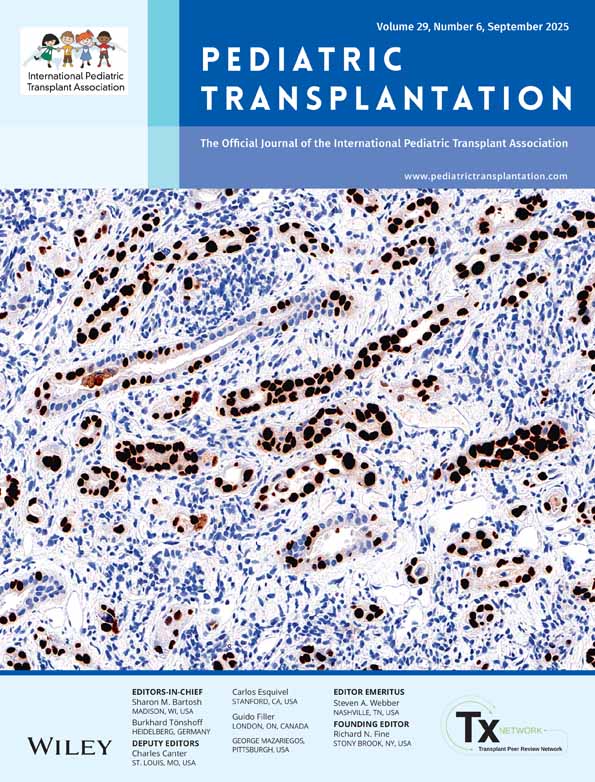Interleukin-1 receptor antagonist in ascites indicates acute graft rejection after pediatric liver transplantation
Abstract
Abstract: Acute graft rejection is one of the most frequent complications after pediatric liver transplantation (LTx). In clinical practice, it is sometimes difficult to differentiate acute cellular graft rejection from other complications because clinical and chemical findings are often non-specific. We therefore investigated the value of cytokine quantification in drained ascites, in addition to quantification of cytokine concentrations of serum, in 30 children in the first 2 weeks after orthotopic liver transplantation (OLT). Six of 30 patients showed acute graft rejection, with rising levels of alanine aminotransferase (ALT) and α-glutathione-S-transferase (α-GST) in serum up to 24 h prior to biopsy-proven rejection. There were no significant elevations of interleukin-2 receptor (IL-2r) and interleukin-6 (IL-6) in serum and ascites. In contrast to these findings, the concentration in ascites of the interleukin-1 receptor antagonist (IL-1ra) increased 48 h before rejection was proven by liver biopsy (p < 0.01, in comparison with the non-rejecting group, n = 24). The IL-1ra concentration in ascites was up to 11-fold higher than in serum during rejection (15.43 vs. 1.38 ng/mL). Two children with early infectious complication showed no significant increase in ascitic IL-1ra concentration. We conclude from these data that quantification of IL-1ra in ascites indicates the start of graft rejection after LTx. As long as abdominal drainage is performed, this non-invasive procedure may be of additional value in differential diagnoses and early diagnosis of rejection.




